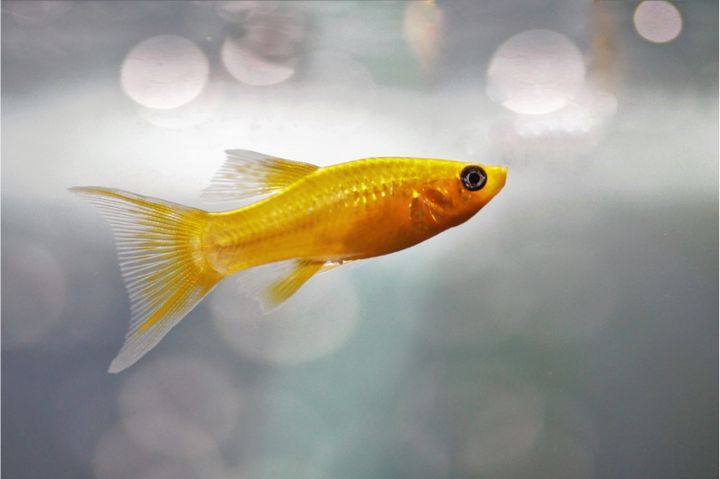Have you noticed that your fish has white, fuzzy stuff on its body that looks like mold? Others have described these spots as looking like cotton.
What’s going on? What’s wrong with your fish? Unfortunately, your fish probably has a fungus.
That sounds scary. But, what causes fungus on fish?
Fungal infections are generally due to an aquarium that is dirty, cold, or lacking oxygen. So, it’s very easy to prevent your fish from developing a fungal infection in the first place.
What Causes Fungus On Fish?
Fish fungus is most common in freshwater aquariums, but saltwater fish can get it as well. Betta fish fungal infection is also a common problem.
There are several different kinds of fungus that can affect fish, but they’re all caused by fungal spores. The most common kinds of fish fungus are Saprolegnia, Achlya, and Fusarium.
Generally, a fish will become affected by a fungus when it is already sick or weakened. Disease can be one cause, as well as bad water quality and a lack of oxygen.
Bad Water Quality
The most common cause of fish fungus is poor water quality. Harsh water conditions lower the defenses of the fish’s immune system. This leaves them more susceptible to fungus.
Be sure to keep your aquarium as clean as possible. High ammonia due to a dirty tank is likely to cause problems with fungus.
Lack Of Oxygen
Another common cause of fish fungus is a lack of airflow in the tank. Although fish breathe water, they need access to oxygen. A lack of oxygen can cause toxic gases to buildup inside the tank, such as ammonia.
It’s important that you have a filter with a good flow or an air stone.
The Water Is Too Cold
It’s important to watch the water temperature of your aquarium water. If you have tropical fish, you’ll need a heater to ensure the water doesn’t get too cold. Cold water will lower the immune support of tropical fish. This leaves them susceptible to fungal infections.
The problem is that fish fungus is highly contagious. Although the first fish to catch it is likely sick already, it can easily spread to healthy fish.
What Happens If You Don’t Treat An Infection?
It’s not fun having a fish with fungus. It’s somewhat difficult to treat because it’s contagious to your other fish. It also affects the fish’s gills, fins, and bodies. It can make it difficult for your fish to swim and breathe.
If you don’t do anything to treat it, the fungus can lead to death.
Untreated fungal infections can lead to secondary infections and disease. Your fish might develop septicemia which is a bacterial infection of the blood. They may also develop fin rot or dropsy.
What Does A Fungal Infection Look Like?

Fortunately, it’s pretty easy to spot a fungal infection. So, you should be able to catch it early to treat it.
White Spots
The most common sign of a fungal infection is white or gray spots on the skin. You will usually notice these spots on the fins and gills, but they can appear anywhere on the body.
Mouth Rot
Another common sign of fungal infection is mouth rot. This looks like the white spots described above. Yet, these spots will be fuzzier and appear at the mouth and gills.
This is one of the most dangerous symptoms of fish fungus. The fungus can prevent water from coming into the body, making it hard for your fish to breathe.
Lumps
Lumps on the body are another sign of infection. If the spots are bleeding, it’s probably a bacterial infection. But, if the spots are not bloody, it’s likely a fungal infection. This happens when fungus grows on top of the infection.
Clamped Fins
Another sign that your fish has developed a fungal infection is clamping of the fins. Fungal infections are physically painful for your fish. So, they may begin to swim erratically around the tank.
Skin Darkening
Lastly, darkening of your fish’s skin that lasts for more than 24 hours can be a sign of a fungal infection.
Conclusion
Fungal infections are quite common in freshwater tanks. They are usually the result of an unfit tank. Dirty tanks are the main culprit, but cold water and a lack of oxygen can also cause a fungal infection.
Luckily, it’s quite easy to spot a fungal infection. Most fish will develop white cottony spots on their gills and fins. If you notice this, be sure to seek out treatment immediately.

